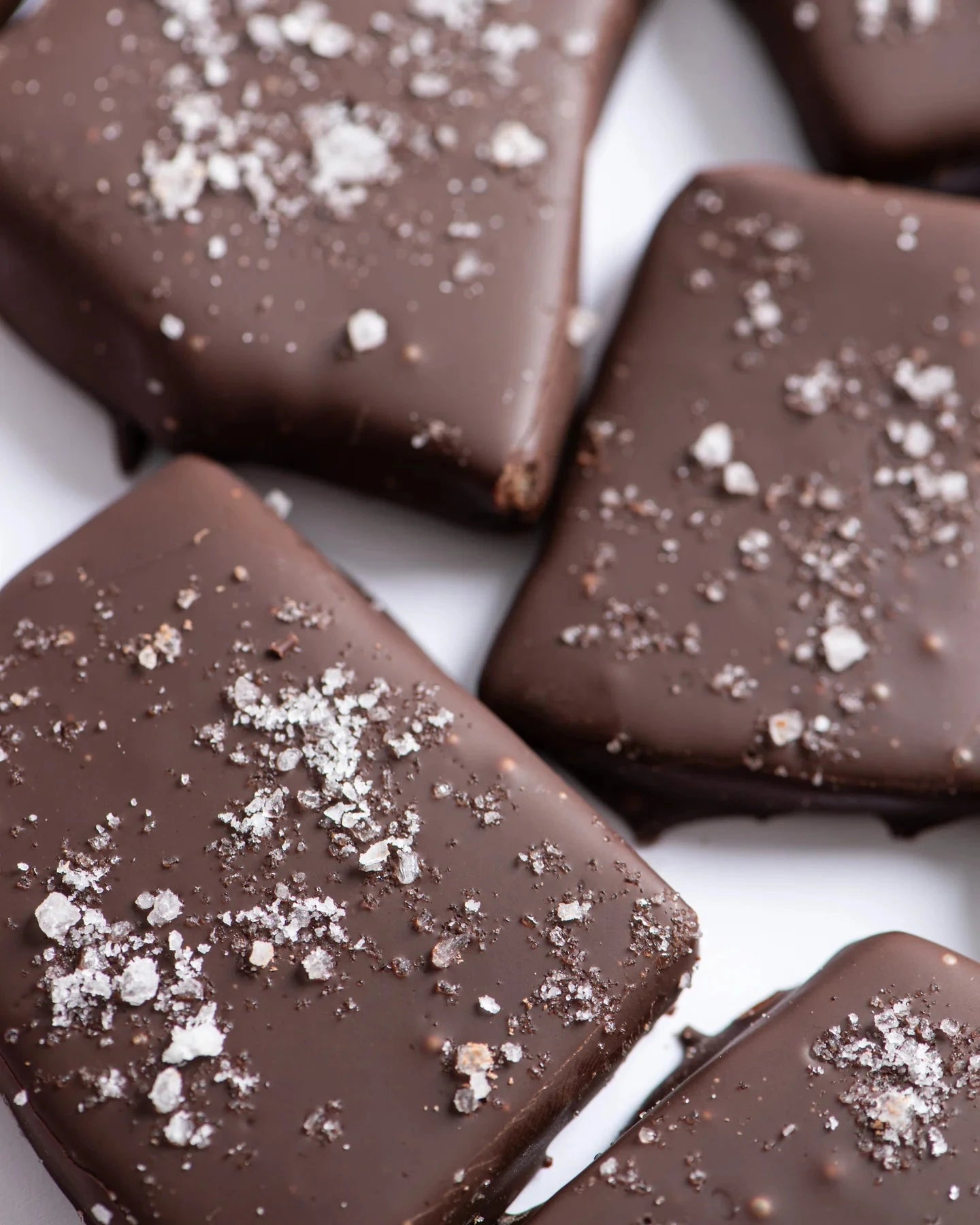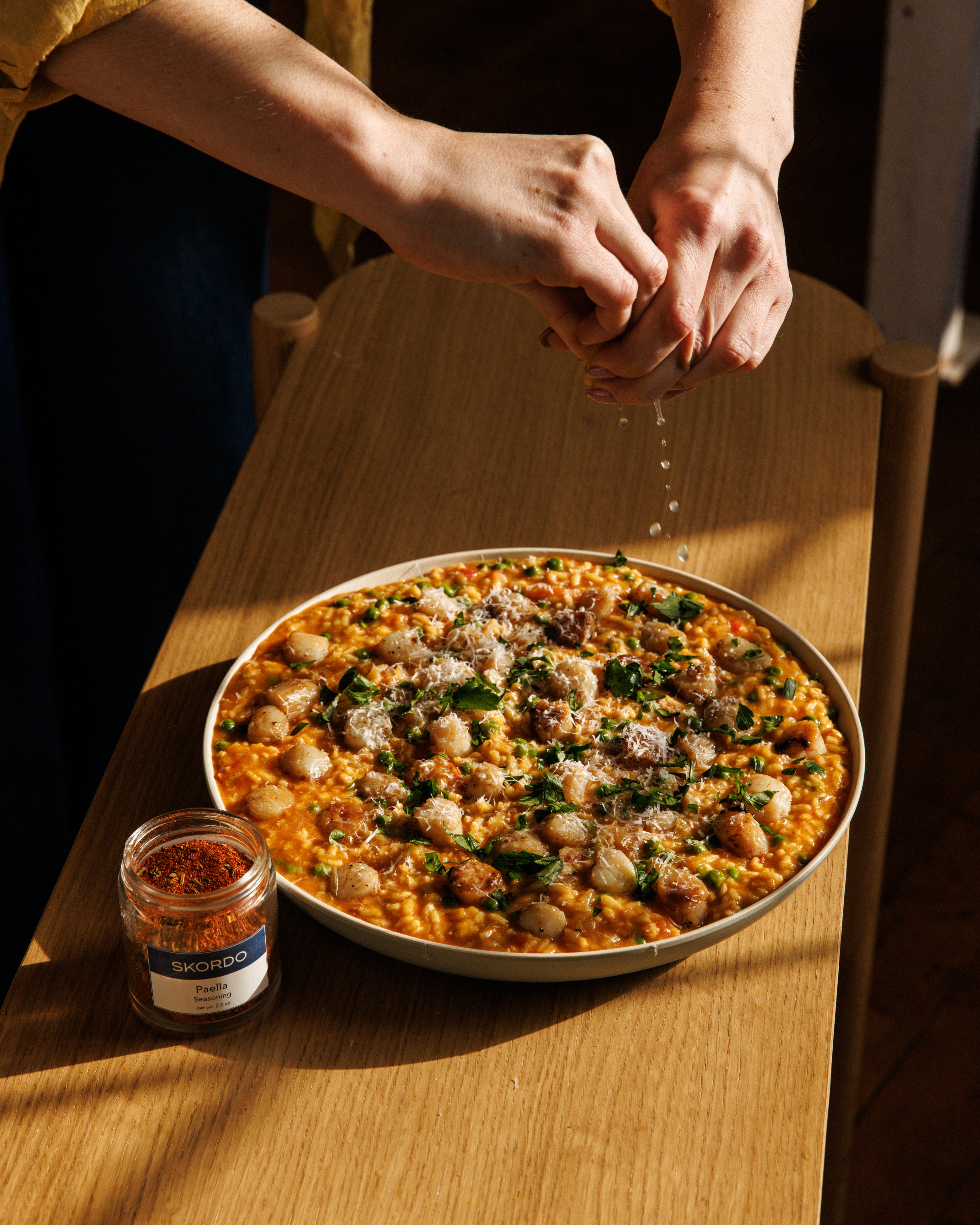We've been fans of kimchi for years and this recipe inspired us to make this bright and acidic treat at home. The recipe tips and jarring techniques are especially helpful for first time fermentors. Kimchi is a great addition to ramen bowls, pairs well with grilled white fish, and is delicious on its own as a quick snack.
Keeps for 1 year in the refrigerator.
INGREDIENTS:
- 2% Brine
- 6 tbsp + 2 tsp (100g) Sea Salt
- 6 cups (4 L) water, at room temperature
- 2 lbs 3 oz (1 kg) Chinese cabbage (napa cabbage or giant bok choy)
- 7 oz (200 g ) daikon radish or 1 3/4 oz (50 g ) red radishes (about 5)
- 7 oz (200 g ) carrot (1 large)
- 7 oz (200 g) yellow onion (1 medium) thinly sliced
- 2 cloves garlic, minced
- 2 tsp (10 mL) chopped ginger root
- 1/4 cup (75 g ) Gochujang (Korean fermented chili paste) or 1 tbsp (15 mL) Gochugaru Korean chile pepper
- 2 tbsp (30 g) sea salt (or the equivalent to 2% of total weight)
- 1 tbsp (15 mL) fish sauce or dried shrimp sauce (optional; see tip)
PREPARATION:
1. In a fermentation jug or large pot, prepare brine by dissolving salt in water. Submerge cabbage (sliced in half), daikon radish and whole carrot. Place a small plate on top as a weight.
2. Let stand overnight (8-12 hours)
3. Drain, discarding brine, and rinse cabbage, daikon radish, and carrot. Slice cabbage into wide strips 3/4 to 1 1/4 inches (2 to 3 cm) long. Slice daikon and carrot into rounds or strips of 3/4 to 1 1/4 inches (2 to 3 cm) long. Place in a large bowl.
4. Add onion, garlic, ginger, gochujang, salt, and fish sauce (if using) to vegetable in bowl. Mix together.
5. Press vegetables unto the jar. Use the jar burping technique* or an airlock.
6. Let ferment for at least 3 days before tasting (kimchi is usually best after 3 to 4 days of fermentation). If mixture is ready, refrigerate in an airtight container. If not, continue to ferment, tasting every 2 days.
TIP:
Fish sauce or dried shrimp sauce will give your kimchi a more pronounced flavor. Kimchi purists will be able to tell that you've added this extra kick to the recipe, but we believe that kimchi is just as easy without the added sauce.
JAR BURPING METHOD:
1. Fill the jar almost to capacity, just to the base of the neck; the more air you leave under the lid, the greater the risk of contact with oxygen.
2. Compress food carefully to ensure that no air bubbles remain under the surface.
3. Cover with a cabbage leaf.
4. Place one or more weights on the leaf, enough to keep the food submerged.
5. If needed, cover food in more brine to keep it from coming to contact with air.
6. Jar seals:
- For recycled jars, set the lid on top of the jar without screwing it on, then place a weight on top.
- For mason jars, place the lid on top and turn the ring with your fingertips without sealing the jar completely.
- For jars with rubber gaskets, close by using the spring lock.
7. To prevent spills, stand the jar in another container to collect liquid that may overflow.
8. Let ferment in the dark at 59 - 77 degrees fahrenheit or 15 - 25 degrees celsius, taking care to wipe the exterior of the jar the first few days in case of overflow; if necessary, once a day for the first 3 to 4 days, you can use your hands or a spoon to submerge vegetables that float to the top. As of the fifth day, do not open the jars until the minimum recommended number of days in the recipe has passed.
9. Once the fermentation is to your taste, place it in the refrigerator or a cold pantry. In a closed jar, it will often keep for up to 1 year, but it will also turn more acidic. Once the jar is opened it will keep for a few weeks in the refrigerator.





